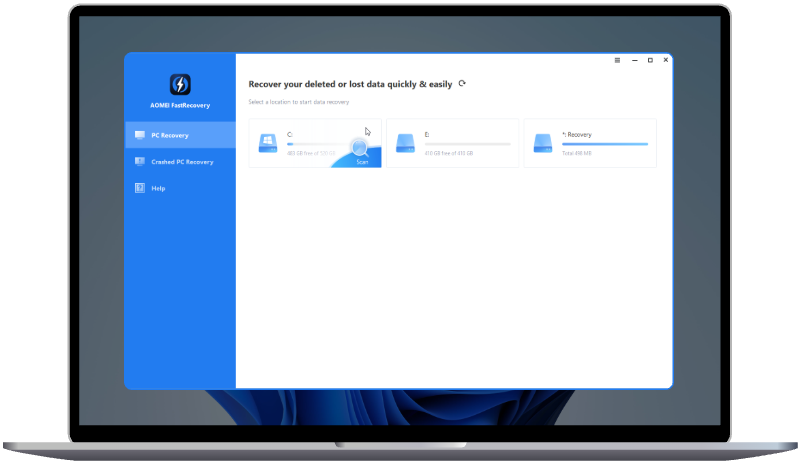[Answered] Does Changing Format Type of Drive Cause Issues?
Does changing format type of drive cause issues? It may happen if you don’t perform the formatting operation properly. Read this article to get different ways of changing format type step by step.
Does changing format type of drive cause issues?
Changing the format type of a drive can potentially cause issues, especially if not done carefully. Here are some key considerations:
✬ Data loss: When you change the file system format (e.g., convert from FAT32 to NTFS or from exFAT to HFS+), the drive may be wiped clean during t✬he process. This means all data on the drive will be lost unless backed up first.
✬ Incompatibility with devices: Some devices (like certain older computers, cameras, or game consoles) may not recognize a new file system. For example, FAT32 is widely supported across different platforms, while NTFS is mostly used in Windows, and HFS+ is specific to macOS. If you change the format, these devices might fail to access the drive.
✬ Performance issues: The performance of a drive can vary depending on the file system used. For example, NTFS is more robust and supports larger files and more advanced features, but it might be slower than FAT32 on smaller drives.
✬ Error in the conversion process: If something goes wrong during the formatting process (such as a power failure or accidental interruption), the drive could be corrupted, resulting in potential data loss or inaccessibility.
It's always recommended to back up important data before making any changes to a drive's format type.
How to change format type of drive in Windows PCs
To avoid questioning “does changing format type of drive cause issues” when changing the format type of a drive in Windows PCs, you can follow these steps. Please note that changing the format will erase all the data on the drive, so make sure to back up any important files before proceeding.
Method 1. Format partition using Disk Management
Disk Management is a built-in tool in Windows that allows you to manage your drives, including formatting them.
Step 1. Press Win + X to open the Power User menu, and select Disk Management.
Step 2. Locate the drive you want to format in the bottom section of the window.
Step 3. Right-click on the drive and choose Format.
Step 4. In the Format dialog box, you can change the file system (e.g., NTFS, exFAT, FAT32) and assign a volume label.
Step 5. Click OK to confirm and wait for the formatting process to complete.
Method 2. Format drive in DiskPart
DiskPart is a powerful command-line tool that allows for greater control over disk management, including formatting drives.
Step 1. Press Win + X and select Command Prompt (Admin) or Windows PowerShell (Admin).
Step 2. Type diskpart and press Enter to open the DiskPart utility.
Step 3. Type list disk to see a list of all the disks attached to your system.
Step 4. Type select disk 1 (replace 1 with the number of the disk you want to format) and press Enter.
Step 5. Type list partition to list all partitions on the selected disk and press Enter.
Step 6. Type select partition 1 (replace 1 with the number of the partition you want to format) to select the target partition and press Enter.
Step 7. Type format fs=ntfs quick (or exFAT, FAT32, etc., depending on your desired format) and press Enter.
Method 3. Change format type via third-party disk formatter
Third-party disk formatting tools often provide additional options and features not found in Windows' built-in tools. These programs may support a wider range of file systems and offer a more user-friendly interface. AOMEI Partition Assistant, a reliable third-party disk formatter, provides a simple and user-friendly solution for this task. It is designed for Windows 11/10/8/7 users, enabling them to format hard drives to NTFS, FAT32, Ext4, Ext3, Ext2, and exFAT. It works even when the selected drive is RAW or write-protected due to file system corruption.
Here’s a step-by-step guide on how to format a partition using this tool.
Step 1. Install and launch AOMEI Partition Assistant. Right-click the partition you plan to format and choose “Format Partition”.
Step 2. In the mini window, choose “NTFS” from the given File System options and click “OK”.
Step 3. Back to the main interface, click “Apply” and then “Proceed” to start the formatting process.
How to change format type of drive without losing data
As you can see, changing the partition type by formatting is absolutely causing data loss. Is it possible to convert a drive from FAT32 to NTFS without losing data? The answer is yes. AOMEI Partition Assistant provides a convenient and risk-free feature called "Convert to NTFS/FAT32" to help you make it. Here’s a step-by-step guide on how to use AOMEI Partition Assistant to convert FAT32 to NTFS without data loss:
Step 1. Install and run AOMEI Partition Assistant. Right-click the drive you need to convert. Select “Advanced”> “Convert to NTFS”.
Step 2. In the pop-up window, NTFS is selected by default. Click “OK”.
Step 3. Now the USB drive is with NTFS file system. Click “Apply” to execute it.
Conclusion
By now, we've addressed the question of “does changing format type of drive cause issues” and presented both built-in and third-party methods for partition formatting when necessary.
In addition, AOMEI Partition Assistant includes useful tools like the "Extend Partition Wizard" for increasing the size of data or system partitions, and "Allocate Free Space" to transfer unused disk space from one partition to another. If you're using a Windows Server operating system, consider trying AOMEI Partition Assistant Server for additional features tailored to server environments.

